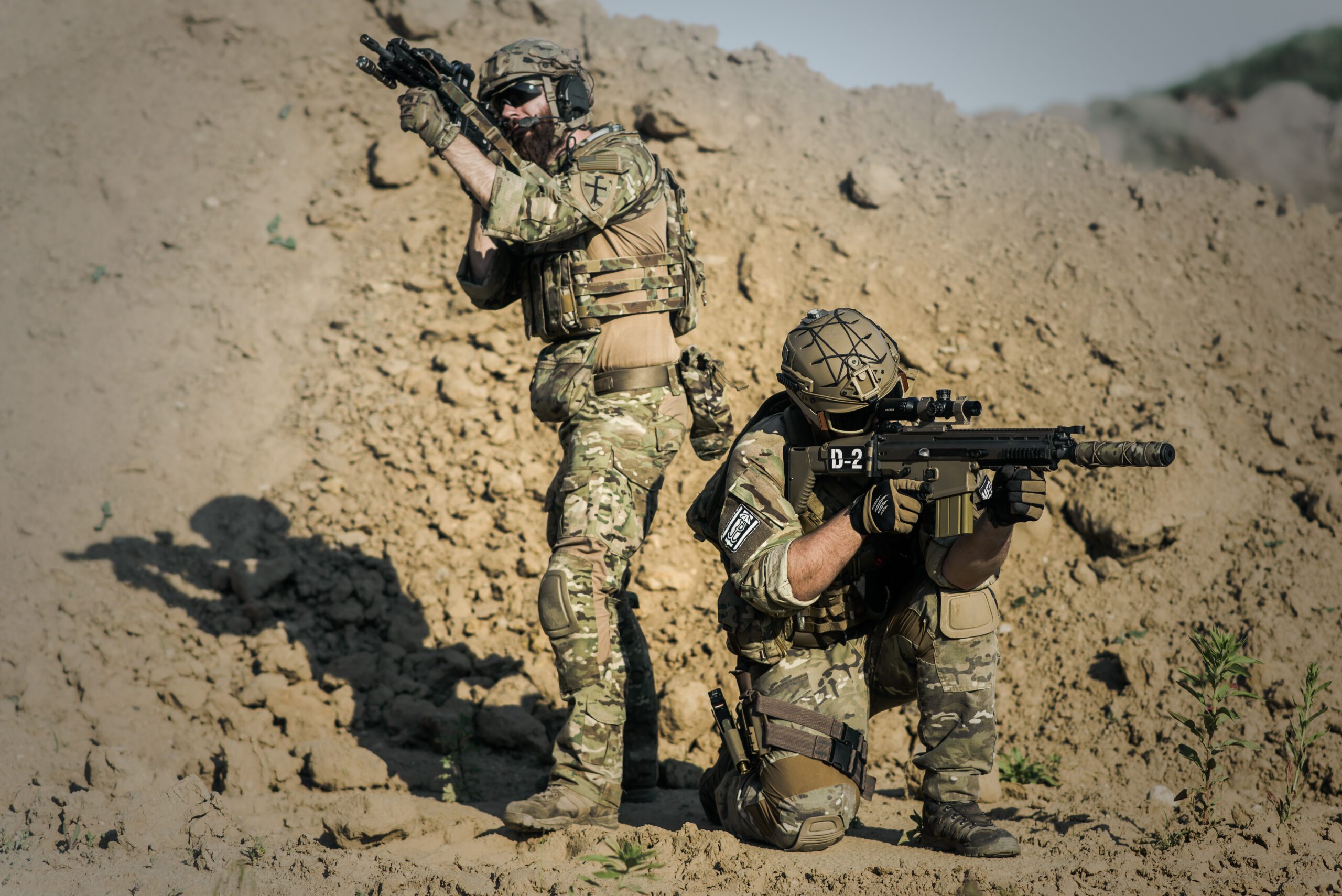In the ever-evolving landscape of global security, nations face many challenges that demand a reevaluation of defence strategies for the coming decade. While traditional military capabilities remain essential, the emergence of new threats, such as grey zone conflicts, cyber warfare, and hybrid tactics, necessitates a balanced approach that incorporates both conventional strengths and cutting-edge technologies.
Recent geopolitical tensions, exemplified by conflicts like the situation in Ukraine, underscore the importance of maintaining robust armed forces capable of deterring aggression and responding effectively to conventional threats. However, in an era where adversaries increasingly exploit non-traditional methods to achieve their objectives, such as cyberattacks, disinformation campaigns, and proxy warfare, reliance solely on traditional military power may prove insufficient.
The conflict in Ukraine serves as a stark reminder of the complexities of modern warfare. While conventional military capabilities are undoubtedly necessary, a comprehensive understanding of hybrid tactics and the ability to counter unconventional forms of aggression should complement these capabilities. In Ukraine, for instance, Russia’s use of hybrid warfare, blending conventional military actions with cyber operations, propaganda, and support for proxy forces, has presented significant challenges for the Ukrainian government and its allies. As technology advances, the traditional methods of engaging in battles have become outdated. Countries and organisations must adapt to the changing landscape of warfare to remain effective. Embracing new technologies and strategies is more critical than ever to stay ahead of the curve.
The role of technology, specifically cyber technology, is very significant in modern-day conflicts. Cyber warfare has become crucial in battles between countries and organisations. With the growth of technology, the way nations and groups engage in combat has been revolutionised. It has the potential to disrupt infrastructure, undermine communications, and create chaos within targeted nations. Therefore, investing in cybersecurity and developing offensive cyber capabilities is essential to safeguard national interests and deter cyber aggression.
While technology plays a vital role in modern defence strategies, it should not overshadow the importance of conventional military strength. A well-equipped and well-trained military continues to be the foundation of national defence. It deters potential adversaries and provides a credible means of responding to traditional threats.
Advanced technology has brought about significant changes in the military, providing numerous benefits. However, relying too much on technology can be risky and create vulnerabilities without effective training, intelligence gathering, and operational preparedness. While technology is crucial, it’s important to note that it alone cannot guarantee security. Military forces must maintain high readiness and adaptability to respond to dynamic threats effectively. Neglecting training, operational planning, and contingency preparedness can lead to complacency, resulting in gaps in their preparedness levels. Therefore, military organisations must balance leveraging the latest technological innovations with maintaining traditional, battle-tested readiness measures to ensure national security. By doing so, they can ensure the benefits of harnessing technology while keeping the military prepared for any situation that may arise.
Technology has become a crucial aspect of warfare in modern times. However, it should not overshadow the significance of traditional military readiness. To illustrate this point, let’s take some concrete examples. For instance, consider the precise airstrikes carried out by the United States military to target terrorist leaders in remote areas. Advanced drones equipped with high-resolution cameras and guided missiles have transformed military operations. They enable accurate and efficient strikes with minimal collateral damage. In this scenario, technology is vital in improving the military’s ability to neutralise threats while minimising risks to civilians and friendly forces.
In some situations, relying solely on technology may not be enough. Consider the counterinsurgency operations in Afghanistan. Despite the coalition forces’ sophisticated surveillance systems and aerial drones, insurgents have often avoided detection and launched surprise attacks by exploiting the rugged terrain and local knowledge. In such environments, traditional military skills like ground reconnaissance, patrolling, and close combat are crucial for gaining control and winning the hearts and minds of the local population.
Furthermore, while advanced technology can provide valuable tools for surveillance, reconnaissance, and precision targeting, it is not foolproof and can be susceptible to countermeasures or adversaries’ exploitation. Therefore, it is crucial to maintain a balance between technological superiority and traditional military capabilities to ensure resilience and effectiveness in the face of evolving threats.
Cyberattacks have become a significant threat to national security. Adversaries exploit vulnerabilities in digital infrastructure to disrupt vital services and steal sensitive information. To prevent such attacks, investing in cybersecurity technologies is crucial. However, it should be complemented with robust training programs to educate personnel on cyber hygiene and incident response procedures. Additionally, intelligence capabilities are essential for identifying emerging cyber threats and attributing attacks to their perpetrators, helping to implement effective countermeasures and deterrence strategies. Therefore, it is necessary to adopt a comprehensive approach to cyber defence.
Developing societal resilience is crucial to mitigating the impact of hybrid warfare strategies, such as disinformation campaigns and cyber-attacks. This resilience-building process involves investing in education and awareness programs to protect the population against misinformation and fortifying critical infrastructure to withstand cyber threats.
In conclusion, defence strategies for the next decade must balance traditional military strength with adopting emerging technologies to address the diverse threats facing nations today. While armed forces remain essential for deterring aggression and ensuring national security, investment in cybersecurity technology, intelligence capabilities, and resilience-building measures is equally important. By embracing a comprehensive approach to defence, nations can better adapt to the evolving nature of conflict and safeguard their interests in an uncertain world.

